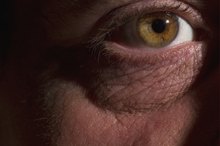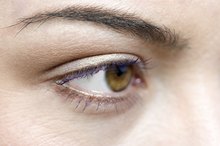What does fact checked mean?
At Healthfully, we strive to deliver objective content that is accurate and up-to-date. Our team periodically reviews articles in order to ensure content quality. The sources cited below consist of evidence from peer-reviewed journals, prominent medical organizations, academic associations, and government data.
The information contained on this site is for informational purposes only, and should not be used as a substitute for the advice of a professional health care provider. Please check with the appropriate physician regarding health questions and concerns. Although we strive to deliver accurate and up-to-date information, no guarantee to that effect is made.
What Eye Problems are Typical With Crohn's Disease?
People often associate Crohn’s disease with intestinal problems, but Crohn’s, which causes chronic inflammation leading to diarrhea and abdominal pain, can also cause inflammation in various parts of the eye. Eye problems affect around 10 percent of people with Crohn’s disease, the Crohn’s and Colitis Foundation of America states. Eye problems most often occur in people who also have arthritis caused by Crohn’s disease. While inflammation in the eye generally responds to treatment without causing vision loss, inflammation does require treatment and can cause temporary vision problems.
If you are experiencing serious medical symptoms, seek emergency treatment immediately.
Dry Eye
Also known as keratoconjunctivitis sicca, dry eye causes annoying sensations of grittiness, itching and burning in the eye. In people with Crohn’s disease, vitamin A deficiency from chronic diarrhea and malabsorption may lead to dry eye. Vitamin A supplements and artificial tears help decrease the discomfort caused by dry eye.
Episcleritis
Spots on the Back of the Eye
Learn More
Crohn’s disease can cause episcleritis, inflammation of the outer layer of the sclera, the white part of the eyeball 1. Symptoms of episcleritis include redness, pain and tenderness in the sclera 1. Steroid eye drops, which reduce inflammation and vasoconstrictors, which constrict the inflamed, dilated blood vessels help treat episcleritis 1. Episcleritis, often clears on its own, but can progress in some cases to scleritis , which can cause:
Iritis
Crohn’s disease can also cause a condition called iritis, an inflammation of the iris, the colored part of the eye. Iritis causes redness, light sensitivity, blurred vision, tearing, pain and possibly floaters, strings or spots that appear in the line of vision, the Angeles Vision Clinic reports.cause:
- Iritis causes redness
- light sensitivity
- blurred vision
- tearing
- pain
- possibly floaters
- strings or spots that appear in the line of vision
- the Angeles Vision Clinic reports
Dilating drops prevent scarring of the iris and steroid medications reduce inflammation.
Keratopathy
Ocular Signs of Lyme Disease
Learn More
Keratopathy, another complication of Crohn’s disease, causes white spots to develop at the edge of the cornea, the clear dome-shaped covering over the front of the eyeball. The spots don’t cause vision loss or pain, and generally don’t require treatment, the Crohn’s and Colitis Foundation of America states.
Retinal Disease
Retinal detachment, where part of the retina detaches from the back wall of the eye, can cause permanent vision loss if not treated promptly.
Uveitis
The uvea, the middle part of the eye, can develop inflammation in individuals with Crohn’s disease. Uveitis leads to pain, blurred vision, redness and light sensitivity. Uveitis is treated with steroid eye drops to decrease inflammation and reduce the chance that glaucoma, an elevation of eye pressure that can damage the optic nerve, develops.
Related Articles
References
Writer Bio
A registered nurse with more than 25 years of experience in oncology, labor/delivery, neonatal intensive care, infertility and ophthalmology, Sharon Perkins has also coauthored and edited numerous health books for the Wiley "Dummies" series. Perkins also has extensive experience working in home health with medically fragile pediatric patients.









